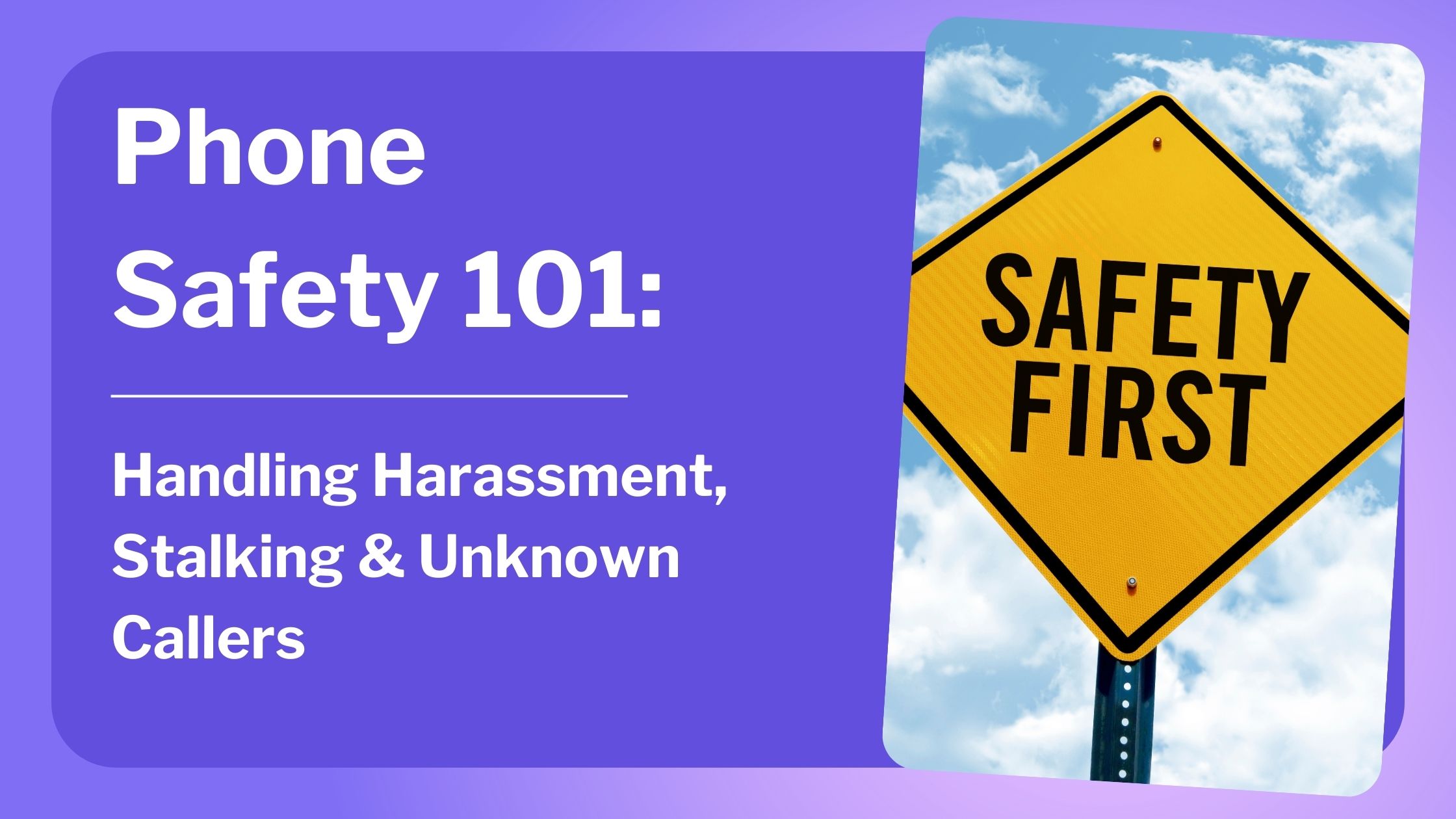
Published 08/25/25
Introduction
Every ring can bring uncertainty. Whether it’s a blocked caller, a hidden caller, or a threatening voice on the line, harassment via phone is both unsettling and invasive. At iCaughtYou, we believe in helping you unmask hidden callers, record and recall problematic calls, and blacklist harassers—so that your boundaries remain protected and phone safety isn't just talk, but real, actionable protection.
In this blog, we’ll walk you through what to do when harassment, stalking, or unknown calls disrupt your peace of mind. Learn how to set firm boundaries, when to escalate to your carrier, and how to document every incident using our call log template. By the end, you’ll be empowered—not alarmed—to take control of your phone safety.
Understanding Harassment vs. Normal Calls
Phone harassment isn’t always obvious. It might be repeated silent calls, threatening language, or persistent unwanted contact. Whether you're dealing with a stranger or someone you know, trust your intuition—if a caller disregards your boundaries, it’s time to act.
Handling an unknown caller is nerve-wracking, but systematically documenting each interaction helps you stay calm and collected.
Step-by-Step: How to Document and Respond
1. Start with a Call Log
Using our call log template ensures you're not left scrambling to recall details after the fact. It’s designed to let you quickly note:
Date
Time
Caller ID (if available)
Phone Number (or “No Caller ID”)
Call Type (e.g., Harassment, Threat, Unknown)
Notes/Details (record content, tone, or any identifying cues)
Action Taken (blocked number, reported, called police, etc.)
Having this on hand—and consistently updating it—helps you stay clear-eyed and credible, whether you're talking to your carrier, law enforcement, or a trusted friend.
2. Set Firm Boundaries
Being proactive matters. If you feel uncomfortable with a caller, tell them explicitly: “I don’t want your calls. Stop contacting me.” Document that statement too. This type of boundary-setting isn’t confrontational—it’s preserving your right to peace.
When Should You Contact Your Carrier?
If the calls continue despite your attempts to block the number, or if the harassment escalates, bringing your carrier into the loop gives you extra support. Here's how to determine when and how.
When to Involve Your Carrier:
Repeated calls from the same number—especially if they continue after blocking.
Anonymous or spoofed numbers that refuse to go away.
Threatening or harassing messages that persist even after you've tried ignoring or blocking.
Call flooding tactics (e.g., someone calls you 50 times in an hour).
If any of these are happening, it’s time to escalate.
How to Reach Out Effectively:
Use your call log to provide your carrier with clear documentation. They’ll need details like date, number, and frequency.
Ask if they can trace the number or implement a temporary block at the network level.
Request enhanced call filtering services—they may offer features like anonymous call rejection or advanced blocking.
If the threats feel serious, ask if the carrier can provide a record of call attempt timestamps—helpful for law enforcement reports.
Your carrier is not just a service provider—they’re your first line of help in safeguarding your phone number’s integrity.
Escalating Beyond the Carrier
What if the calls don’t stop? Here's your next play:
Report to Law Enforcement, especially if threats are explicit or physical stalking seems likely. A well-maintained call log shows you're serious and organized.
Use legal tools like restraining orders if needed—evidence from your log and your carrier’s records can bolster your case.
Consider a digital safety plan: share your log with a trusted friend or family member, track geolocation during suspect calls, or switch devices temporarily.
Why Documentation Matters
When facing repeated or harassing contact, disorganization benefits the harasser. Documentation is your defense—and your peace of mind. The simple act of filling out the call log:
Places you in control, not reaction
Prevents memory lapses in stressful moments
Gives clarity when discussing solutions with your carrier or law enforcement
Enables pattern-spotting (“Always calling at 2 a.m.”—noted)
Your Call Log Template
To make things easier, we’ve created a simple, printable call log template for documenting unwanted or suspicious calls. Keep it on your phone or print a few copies to keep by your desk. It's a small step that brings big clarity when things feel overwhelming.

What to Do Next
Download and print your call log template so it’s always nearby.
Start logging any suspicious or unwanted calls immediately—regardless of severity.
Set boundaries clearly when harassed—verbally and in writing if needed.
Tell your carrier as soon as you see a troubling pattern; forward your logs.
Take it further with law enforcement or legal avenues when the behavior escalates.
Conclusion
You have every right to feel safe—even when a call lights up your screen from “No Caller ID” or “Blocked Number.” With clear boundaries, systematic documentation, and savvy escalation steps, you can reveal who’s on the other line with confidence and poise.
At iCaughtYou, our mission is simple: to help you unmask hidden callers, record and recall harassment, and blacklist abusers so your phone stays safe and stress-free. The tools, the knowledge, and the support—are all here. You’re not alone, and you’re not helpless.
Download the call log template, protect your peace, and take back control—one call at a time.